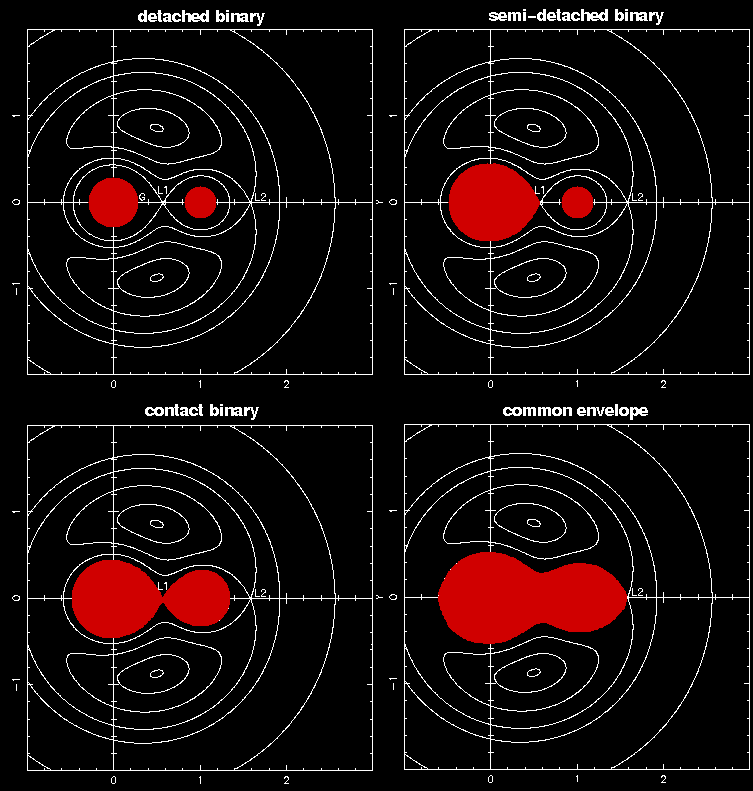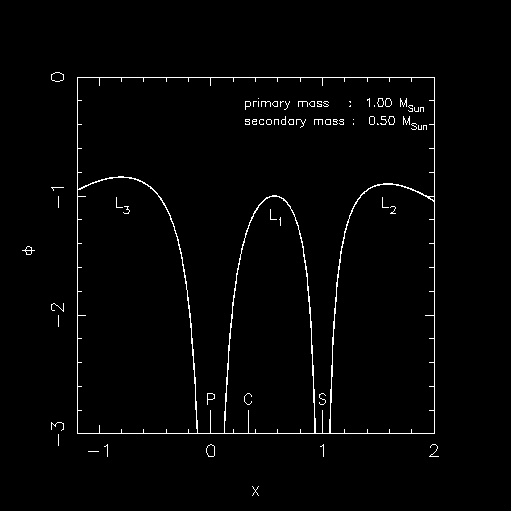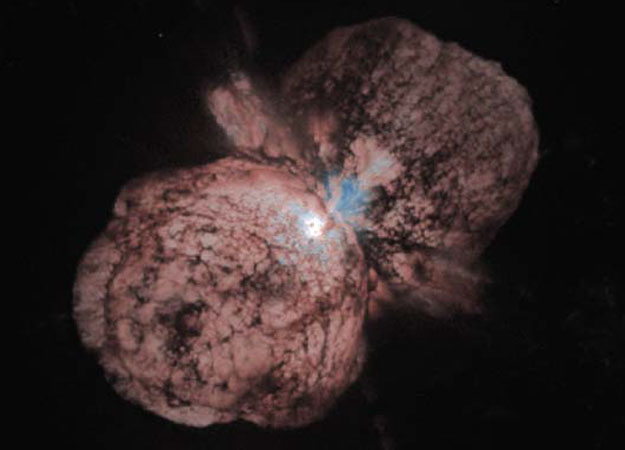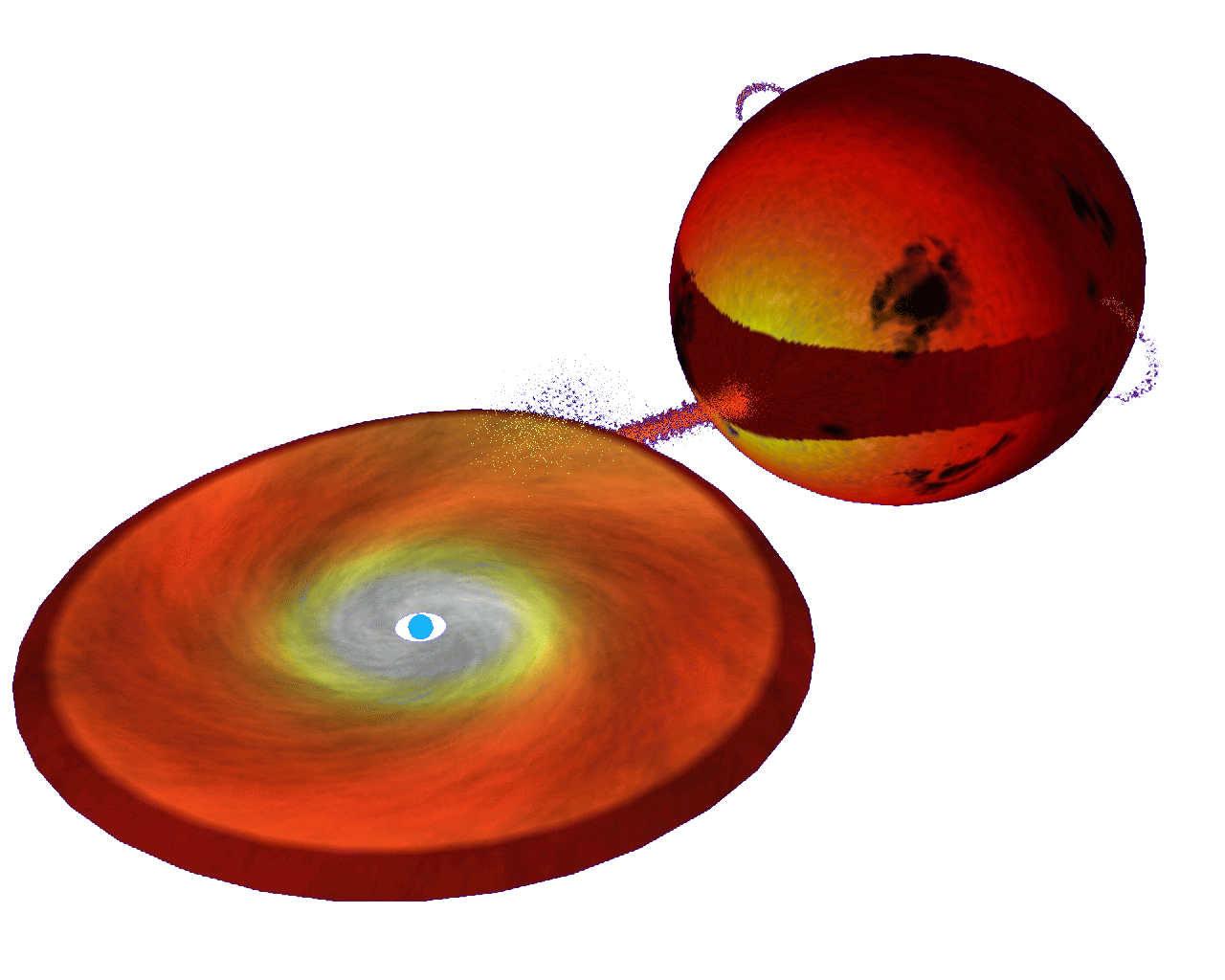| mass transfer |
|
|
| When both of the stars in a binary are sufficiently small, each is within its Roche lobe and is relatively undistorted. In this case, the system is known as a detached binary. |
|
| As the stars evolve, they expand and gradually fill their potential wells. Eventually a point is reached when the more massive star has expanded to such an extent that its surface is defined by the Roche lobe. Further expansion of the star (or contraction of the Roche lobe) results in a flow of material between the stars via the point joining the two Roche lobes - the inner-Lagrangian or L1 point. In this case we have what is known as a semi-detached binary. |
|
| A third type of system, known as a contact binary, occurs when both stars fill their Roche lobes. |

| |
|
| The process of mass transfer from a Roche-lobe filling star to its companion can be likened to a rising water level in the plot below of Roche potential as a function of distance between the two stars - when the right-hand well is full, the water will spill into the left-hand well. This process finally provided an explanation for a long-standing mystery known as the algol paradox. |

| |
|
| The fate of the transferred material depends on the masses of the two stars and their evolutionary states. In a system with a relatively massive donor star, material is transferred faster than it can be "digested" by the less massive accreting star. As a result, the transferred material eventually overflows the latter's Roche lobe as well, forming a common envelope containing both stars in its interior. Drag forces between the common envelope and the stars causes the two stars to spiral inwards and the common envelope to be ejected. In this way it is possible to reduce the separation between the two stars in a binary from many AU (corresponding to an orbital period of tens of years) to a few stellar radii (corresponding to an orbital period of hours). One possible example of a star in the process of ejecting its common envelope is Eta Carinae, as shown in the image below. |
 ©J. Morse (Colorado) | |
|
| If, on the other hand, material is transferred from a star like the Sun to a compact object which is more massive, such as a white dwarf, the accretion will be relatively gradual and no common envelope will form. Instead, the material will accumulate into an accretion disc, as shown in the image below and in these movies (1, 2, 3, 4) by John Blondin (NCSU) and (5) by Mike Truss (Leicester). If the compact object has a strong magnetic field, however, no accretion disc will be formed and the transferred material will accrete directly onto the magnetic poles of the compact star, as shown in this movie by Graham Wynn (Leicester). |
 ©Andy Beardmore |